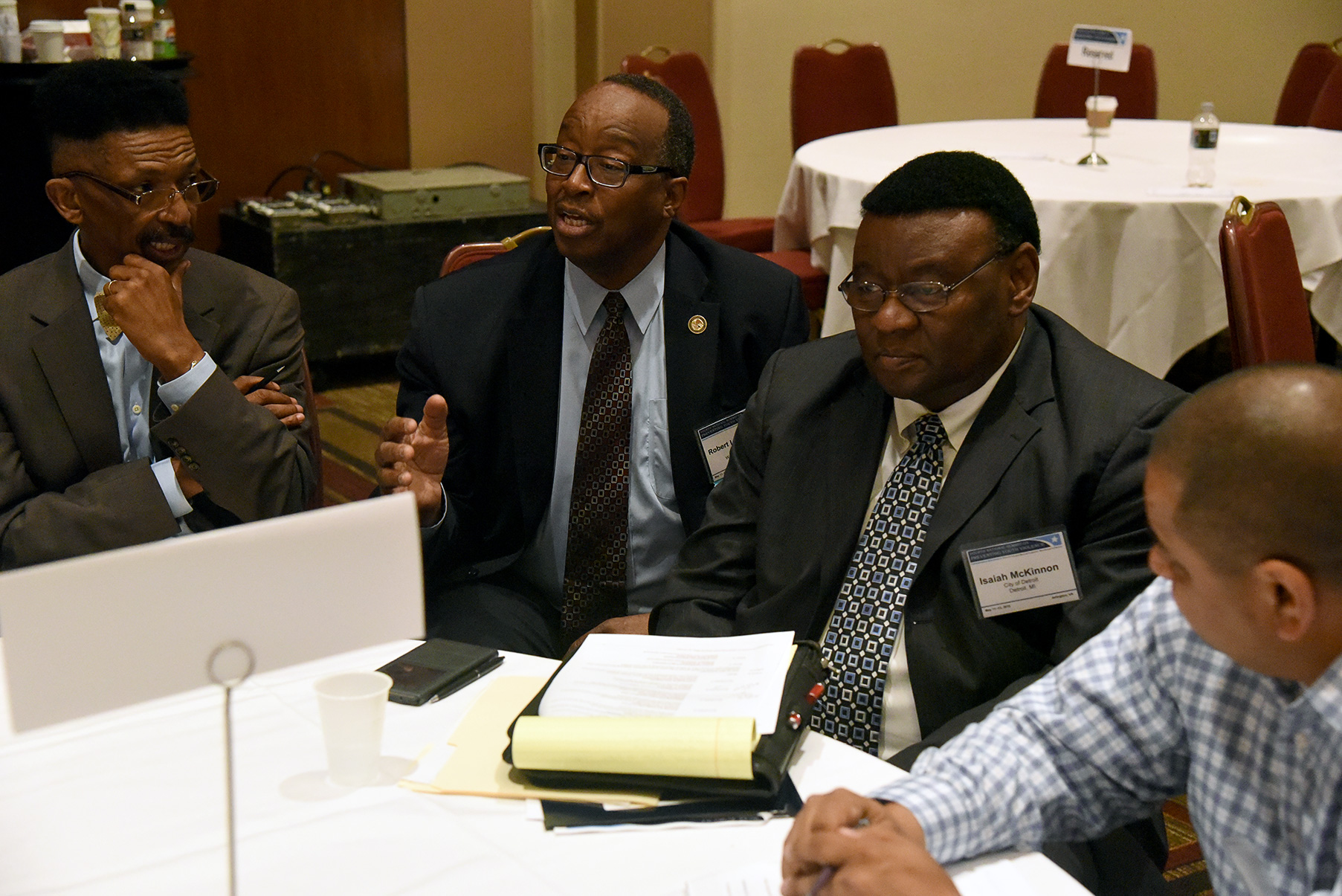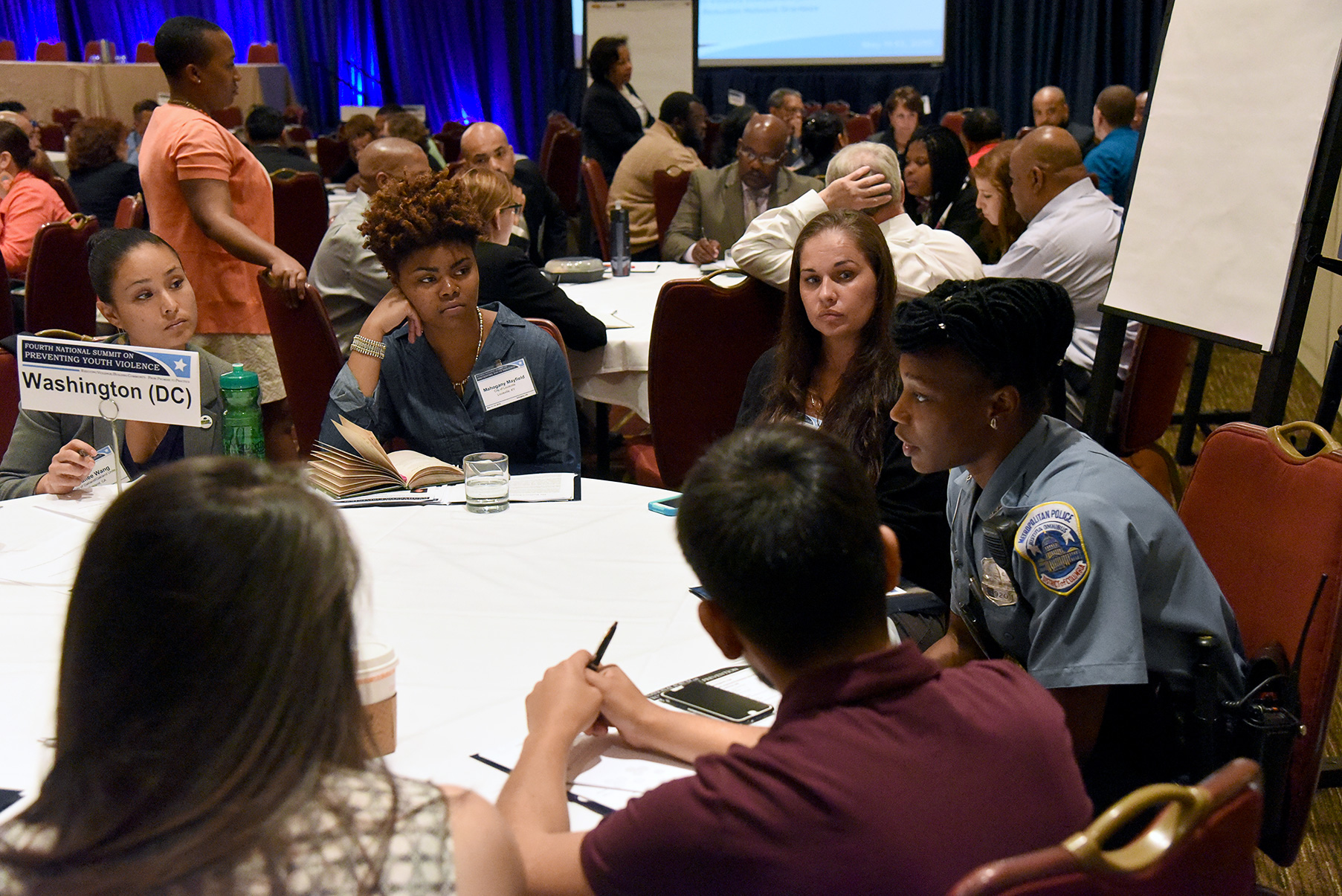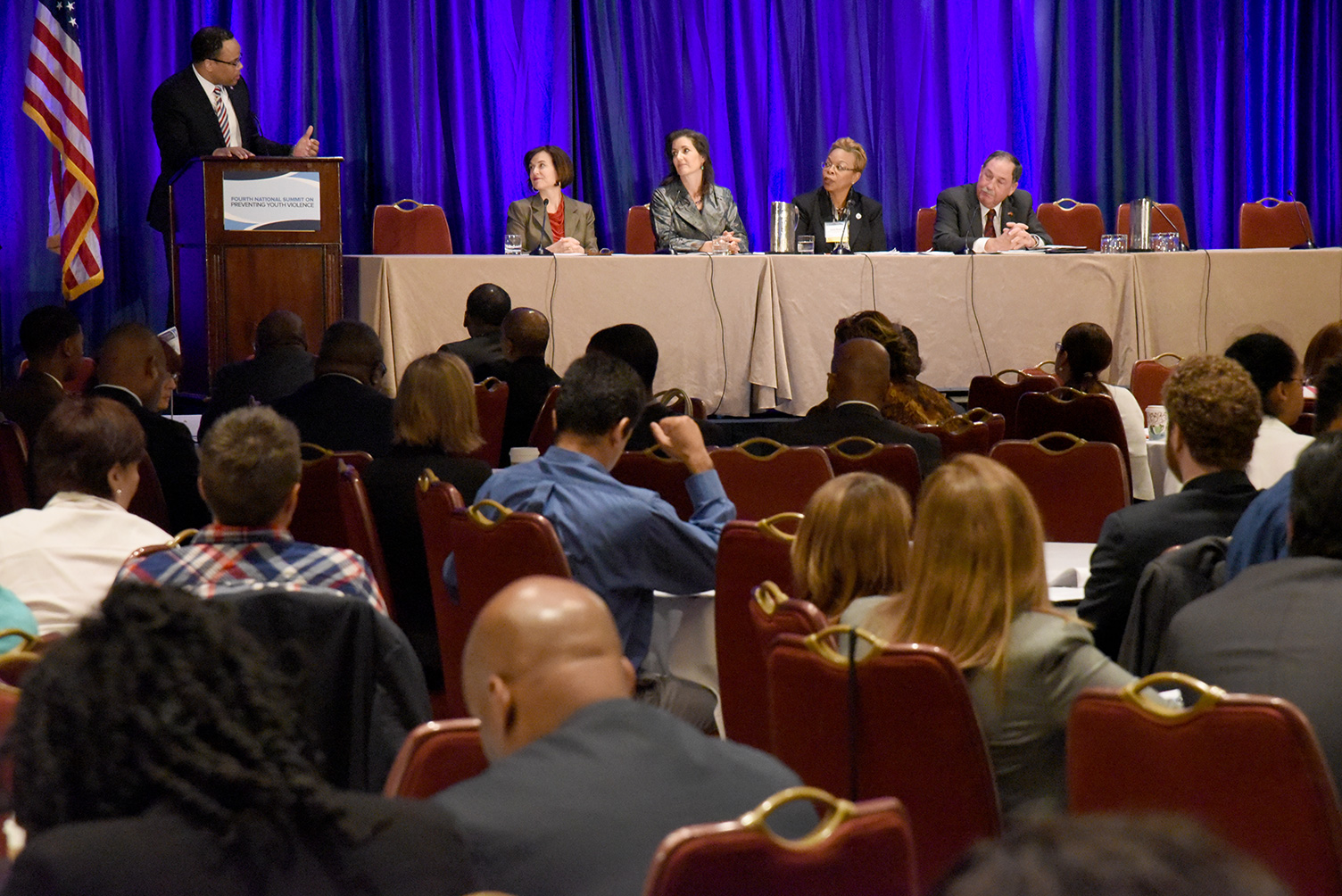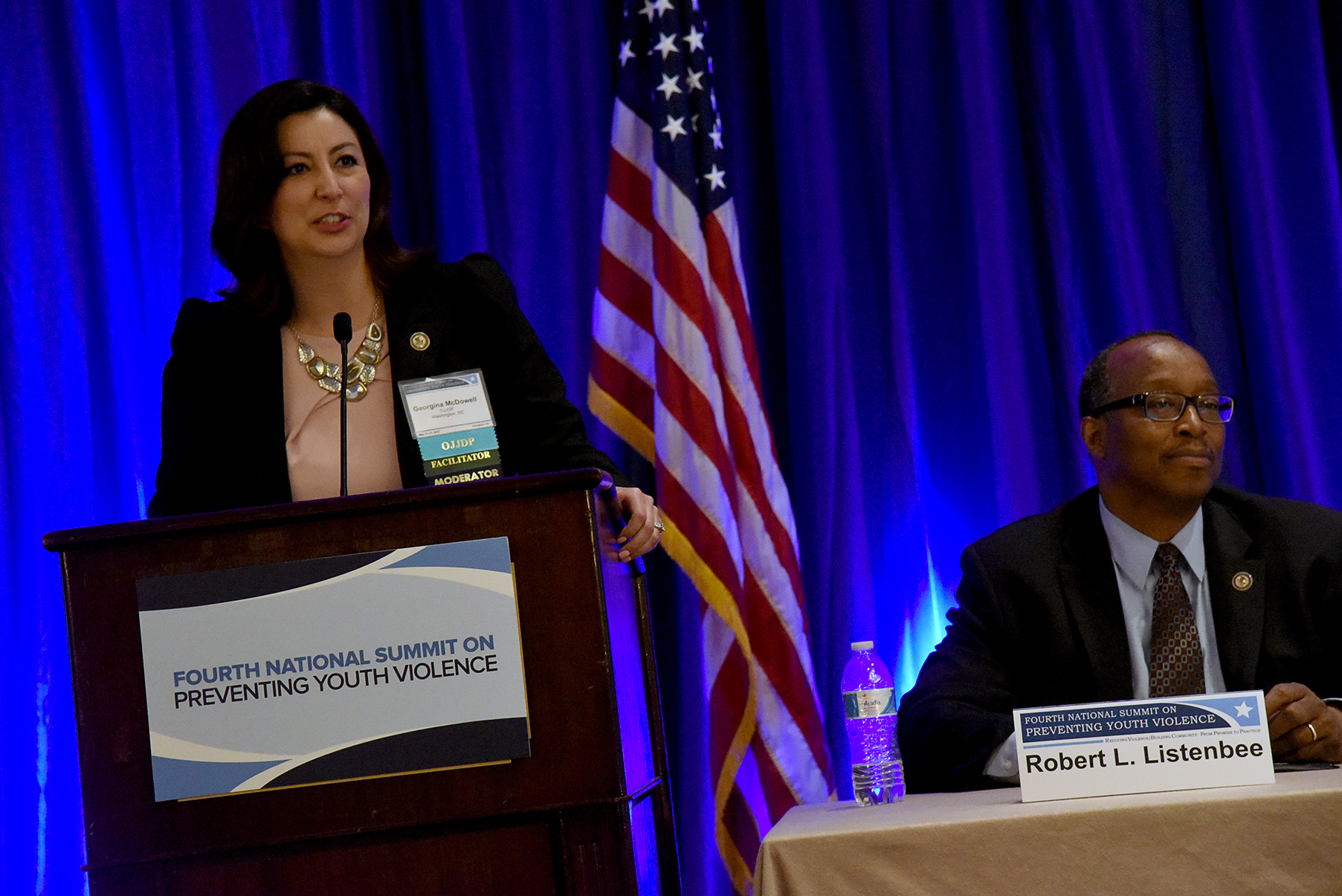ATTORNEY GENERAL LYNCH, YOUTH LEADERS MEET IN VIRGINIA FOR VIOLENCE PREVENTION SUMMIT
by Michael Hopps
In one of her first public appearances since becoming the highest law officer in the country, Attorney General Loretta Lynch told the Fourth National Summit on Preventing Youth Violence in Arlington, Va., May 12, that violence prevention "requires more than a prosecution strategy, but rather an approach that sees all sides" of the issue.
In fact, the 3-day Summit, "Reducing Violence/Building Community: From Promise to Practice," drew 440 people from more than 60 communities nationwide to the Hyatt Regency Crystal City, where attendees examined violence prevention from 360 degrees.
The Summit was, in part, a union of OJJDP's three key violence prevention initiatives: the National Forum on Youth Violence Prevention (with representatives from 15 major U.S. cities), the Community-Based Violence Prevention program (15 cities and one county), and the Defending Childhood Initiative (three counties, two tribal nations, and two cities). They were joined by grantees from other federal violence prevention initiatives, such as Cities United, My Brother's Keeper, STRYVE (Striving To Reduce Youth Violence Everywhere), and the Violence Reduction Network.




Clockwise, from top left: OJJDP Administrator Robert L. Listenbee talks with Detroit Deputy Mayor Isaiah McKinnon and other city representatives; Louisville youth representative Mahogany Mayfield and youth attendees hear from Police Officer Brittany Day; OJP Chief of Staff Theron Pride addresses panel (from left to right, Minneapolis, Minn., Mayor Betsy Hodges; Oakland, Calif., Mayor Libby Schaaf; Camden, N.J., Mayor Dana Redd; and Salinas, Calif., Mayor Joseph Gunter); OJJDP Senior Policy Advisor Georgina Mendoza McDowell gives introductory speech. All photos taken by Starr Stepp.
Roundtables and Workshops
The first day of the Summit featured seven breakout roundtables to hash out subjects such as leveraging funds, advancing policy and local laws, challenges in forming collaborations, and fostering community engagement. At these roundtables, U.S. Attorneys and other federal officials brainstormed with city mayors, community organizers, and youth representatives from Forum cities—some of whom had been in and out of the justice system.
During the second and third days, attendees met en masse in the Regency Ballroom to hear presentations from informed and inspirational speakers such as the Substance Abuse and Mental Health Services Administration's Office of Behavioral Health Equity Director Larke Huang, National Latino Fatherhood and Family Institute Director Jerry Tello, and Casey Family Programs President William C. Bell. Between speeches, summitgoers had their pick of participating in any of 20 workshops on opportunities for youth leadership, international innovations in violence prevention, public health approaches to youth well-being, or a host of other topics pertinent to keeping young people out of harm's way.
'Are We Serious?'
Bell began his remarks with the question, "Are we serious?" He then referenced the National Advisory Commission on Civil Disorders, appointed in 1967 by President Lyndon B. Johnson to determine the causes of riots that had traumatized various U.S. cities each summer since 1964. That Commission's appraisal, released the following year and known as the Kerner Report, concluded that the United States was "moving toward two societies, one black, one white—separate and unequal."
The Kerner Report cited the top three issues constraining the upward mobility of African Americans in 1968: "police practice, unemployment, poor schools." The Commission called for legislation to promote racial integration and invest in the nation's inner cities, through better housing, job training programs, and job creation.
However, as Bell reminded the Summit audience, President Johnson rejected the Commission's recommendations.
Bell alluded to the riots of only a week earlier in Baltimore, Md., which had followed the death of a young African American man while in police custody, and to other recent examples of police officers using lethal force to subdue African American men. Comparing the problems U.S. inner cities faced 47 years ago with the problems they face today, he closed his presentation as he had begun it: "Are we serious?"
Selling 'Real Hope'
Bell's indictment of what he saw as a lack of societal progress was countered by a spirit of collaboration and hope through much of the Summit. Alignment was a key theme—as in aligning health and education, local and state governments, philanthropic and public interests, and law enforcement and civil rights.
James Mercy, director of the Division of Violence Prevention at the Centers for Disease Control and Prevention (CDC), described how the consensus public health perspective on violence has changed since he began his career at CDC. "Thirty, 35 years ago, 'violence' and 'prevention' weren't used in the same sentence," he recalled, speaking at the final session. "Now, police departments and health departments are working together on youth violence."
OJJDP Administrator Robert L. Listenbee helped frame the 3-day Summit with opening and closing remarks, calling attention both to the ubiquity of youth violence (he told of visiting a third grade classroom in Philadelphia, Pa., in which every pupil knew someone who had been shot) and its cure. Addressing the Forum members at the final session, Administrator Listenbee said: "What gives me hope—and our children hope—is you."
Dr. Mercy added, "What we're selling is real hope, based on science and evidence combined with compassion."
Office of Justice Programs Chief of Staff and Senior Counsel Theron Pride, helping moderate the final session, intoned, "We're going to wrap up the conversation, but we're not going to stop the work."
|
|
|
